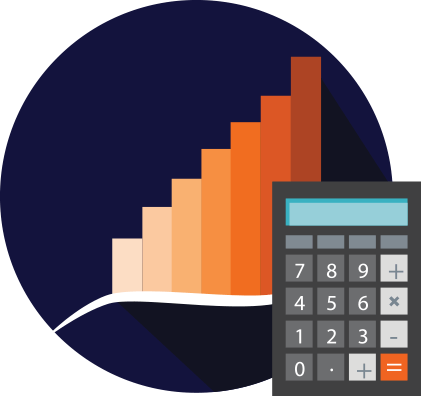If you’re self-employed, you don’t have access to a retirement account sponsored by “the man.” However, you can still save for the future. There are different retirement accounts for the self-employed, allowing you the chance to take advantage of tax benefits in the process.
Retirement Accounts: Self-Employed Edition
To make sure you’re preparing for the future, it’s a good idea to open a retirement account, even if you work for yourself. Here are some accounts you can consider.
Traditional and Roth IRAs
Anyone can open a Traditional or Roth IRA as long as they have earned income. For the Roth, you need to make sure you meet the income eligibility requirements.
However, the contribution limit is lower with this type of account. For example, in 2023, the contribution limit is $6,500. Compare that to the contribution limit of a Traditional 401(k)—$22,500.
A Traditional or Roth IRA is fairly easy to open, though. Most online brokers and robo-advisors have IRA accounts. You can get started and begin contributing without worrying about special rules if you have employees.
If you don’t think you can set aside a lot right now but want to at least get started, using a Traditional or Roth IRA can be a good place to begin.
Solo 401(k)
As long as you don’t have employees, you can open a solo 401(k). This retirement account for the self-employed comes with much higher contribution limits. This is because, technically, you get to contribute as yourself and as the business. The IRS will let you contribute up to $66,000 in 2023. This can be a way to supercharge your retirement savings.
However, if you hire someone other than your spouse to work in your business, you can no longer contribute to this account. Carefully consider your future plans before deciding on retirement accounts for the self-employed.
SIMPLE IRA
If you have employees, the SIMPLE IRA can make sense. This IRA allows you to contribute to your future while providing a benefit to your own employees. You can contribute up to $15,500 in 2023 to a SIMPLE IRA. Plus, this account comes with an employer match. So you get that as well, increasing how much you get to set aside. There is a Roth version of the SIMPLE IRA.
If you’re going to do this, though, you need to make sure you’re prepared to match your other employees’ contributions at the same rate.
There are other rules to pay attention to with this account, so it makes sense to check with the IRS before moving forward.
SEP IRA
Another retirement account for the self-employed you can use is the SEP IRA. Like the SIMPLE IRA, there are some specific rules to follow with the SEP IRA. Additionally, there is a Roth version available. One of them is that it’s employer contributions only. So, if you’re self-employed with no other employees, no problem. You can contribute up to $66,000 or 25% of your compensation, whichever is less.
This is a way to supercharge your retirement account. However, you also need to make contributions to others’ accounts if you have employees. Setting this up might not make sense, depending on your situation. Consult with a professional when trying to decide how to set up benefits for your employees, if you have them.
Don’t forget the HSA
While not technically a retirement account, the Health Savings Account (HSA) can be a great tool in your self-employed arsenal.
The HSA gives you a chance to set aside tax-advantaged money now, for use on qualified medical expenses. Plus, you can grow it over time, using an investment account. Later, you can use the money for healthcare costs during retirement. Or, if needed, it can function as a backup IRA after you reach age 65.
Make sure you understand the rules of an HSA before you move forward, though. There are some requirements and contribution limits. For the self-employed, though, it can supplement both a healthcare plan and a retirement plan.
Taxable investment accounts
Finally, don’t forget you can invest with a taxable account. Unlike tax-advantaged retirement accounts for the self-employed, you have to be prepared to potentially pay taxes sooner. However, you won’t need to worry about extra penalties if you take early access to the account. For those who want to retire early, it might make sense to include taxable investment accounts.
Deciding What Works Best for You
When choosing retirement accounts for the self-employed, it’s important to consider a number of factors:
- How much do you want to set aside? Would you like to be able to put aside a lot more than you could with a Traditional or Roth IRA?
- Do you have other employees? Do you plan to hire more? SEP and SIMPLE IRAs are easy to set up and administer, but they come with some limitations. Understand them.
- What do you want to be able to access in terms of early retirement?
You can have different types of retirement accounts for the self-employed. Run the numbers, consider your needs and choose what works best for you.

